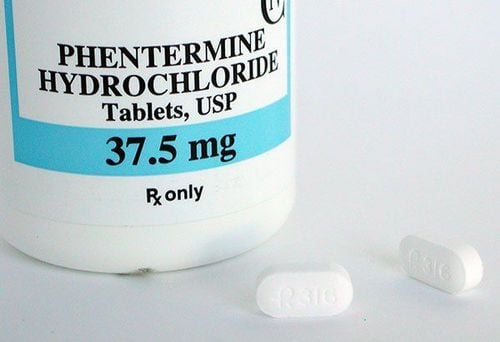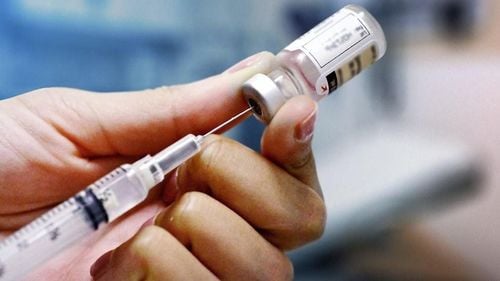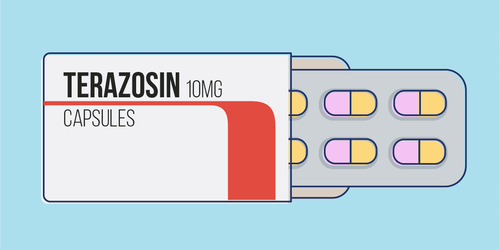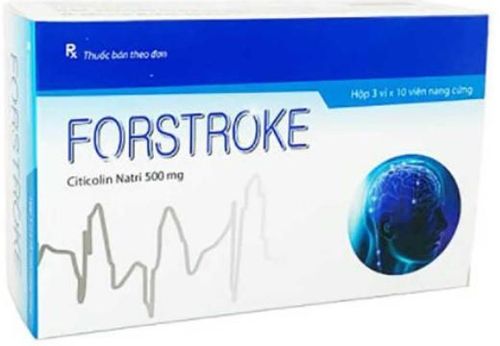This is an automatically translated article.
Cavernous sinus thrombophlebitis is a disease with a low incidence, but this is a dangerous condition that, if not recognized and treated early, can be life-threatening, or cause irreversible complications. recovery in the cranial nerves.1. What is cavernous sinus thrombosis?
The cavernous sinuses are hollow structures at the base of the skull that drain blood from the facial veins.Cavernous sinus thrombophlebitis is a condition caused by infections of the face, causing blood vessels to become blocked and the formation of blood clots in the cavernous sinuses.
Cavernous sinus thrombophlebitis is one of the causes of cavernous sinus syndrome with manifestations due to damage to many cranial nerves such as:
Early signs of cavernous sinus thrombophlebitis are pain, tenderness Headaches can be unilateral or bilateral, or pain in the face. May be unilateral or localized in posterior orbit and forehead. High fever is also a common manifestation of cavernous sinus thrombosis. Paralysis of the third cranial nerve is the oculomotor nerve: Eyelid ptosis, copper dilatation, decreased pupillary reflex. Nerve V damage: Increased or lost sensation in the optic nerve or maxillary nerve, decreased corneal sensation and decreased corneal reflexes. Causes strabismus or strabismus. Reduced vision or possible loss of vision. Injury to the central nervous system: Can cause disturbances in consciousness, movement disorders, epilepsy... Cavernous sinus thrombophlebitis is most commonly caused by infection in the sphenoid sinus, ethmoid sinus, and oral infection. , caused by mastoid otitis. In the cavernous sinus includes nerve structures and blood vessels, so when there is inflammation, it causes damage to the nerves in this area. If not treated early, it can cause death or permanent complications.

Dấu hiệu sớm của tình trạng viêm tắc tĩnh mạch xoang hang là đau, đau có thể đau đầu một bên hoặc cả hai bên hay đau trên vùng mặt
2. Risk of cavernous sinus thrombophlebitis
Although the incidence of venous thromboembolism of cavernous sinuses is not high, it can occur in many different subjects, including children and adults. Especially in people with sinus infections, mastoiditis, oral infections... Especially this situation is common in people with reduced resistance.When there is a cavernous sinus infection, to control the infection our body creates a blood clot to prevent the spread of bacteria. However, blood clots in the cavernous sinuses cause increased intracranial pressure and brain damage.
Cavernous sinus thrombosis with cavernous sinus thrombosis has a relatively high mortality rate. The mortality rate is between 30-50% of cases. In addition, it can cause serious complications such as oculomotor paralysis, loss of vision, loss of movement... These are irreversible complications if not treated early.
The prognosis of the disease is quite severe, so early detection of warning signs is very important.
3. Diagnosis and treatment of cavernous sinus thrombophlebitis
3.1 Diagnosis of cavernous thrombophlebitis When the patient has suspicious signs of the disease, it is necessary to perform some paraclinical tests such as MRI or computed tomography. In addition, it can be combined with blood tests, angiography to diagnose.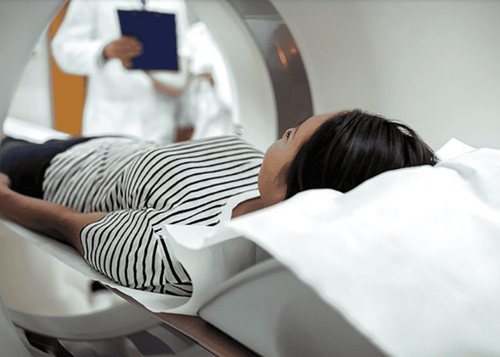
Khi người bệnh có các dấu hiệu nghi ngờ bệnh, cần thực hiện một số xét nghiệm cận lâm sàng như MRI hoặc chụp cắt lớp vi tính
The main treatment is high-dose antibiotics. Antibiotics are started as soon as possible. A course of antibiotics can last 3 to 4 weeks to control the infection. Symptomatic treatment, if any, such as: Fever above 38.5 degrees, fever should be reduced, if there is a seizure, use anti-epileptic drugs, control intracranial pressure... Use anti-inflammatory corticosteroids if necessary. Treatment is combined with monitoring of clinical signs. Rehabilitation of cranial nerves and hemiplegia.
4. How to prevent cavernous sinus phlebitis
Some measures can reduce the risk of disease such as:Healthy diet: Reduce fried foods, increase green vegetables and fruits. Limit alcoholic beverages and narcotics. Maintain a healthy weight: Obesity increases the risk of cavernous vein thrombosis, so maintaining a healthy weight helps reduce the risk of the disease. Increase physical activity: Regular physical activity helps to improve health and control weight. Proper rest mode, limit excessive stress.

Thừa cân, béo phì có thể làm tăng nguy cơ huyết khối tĩnh mạch, do đó, bạn cần duy trì cân nặng hợp lý
To protect general health and detect early signs of cavernous vein thrombosis, customers can go to Vinmec International General Hospital to be examined by leading doctors and experts in the field of cavernous sinus thrombosis. Heart. The examination will help the doctor understand the health status of the client to give the best advice and treatment.
With the standard of an international hospital, Vinmec is equipped with a synchronous system of modern facilities and advanced machines to help the treatment process become more effective and shorten the time.
Please dial HOTLINE for more information or register for an appointment HERE. Download MyVinmec app to make appointments faster and to manage your bookings easily.




